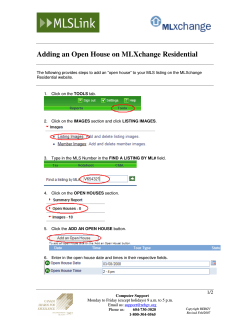
CS 124 Data Structures and Algorithms — Spring 2015 Problem Set
CS 124 Data Structures and Algorithms — Spring 2015
Problem Set 4
Due: 11:59pm, Wednesday, March 11th
See homework submission instructions at
http://sites.fas.harvard.edu/~cs124/cs124/problem_sets.html
Problem 5 is worth 40% of this problem set, and problems 1-4 constitute the
remaining 60%.
1
Problem 1
There are n young wizards standing in a row at Hogwart’s, sorted alphabetically by last
name. The sorting hat would like to assign a house to each one: Hufflepuff, Gryffindor,
Ravenclaw, or Slytherin. The hat’s job is complicated by the fact that some children’s
parents absolutely hate certain houses, and if the hat assigned their child to such a house
then the parents would complain to the headmaster, who in turn would burn the sorting
hat to ashes. Furthermore the sorting hat does not like to put two alphabetically adjacent
students into the same house. Given the sorted order of students, and constraints on certain
students not being assigned to certain houses, is an assignment even possible?
Consider the following divide-and-conquer algorithm to answer the above question, where
S[i] is student i, and houses[i] is the list of houses student i may be assigned to:
algorithm is_possible(houses):
n = length of houses
if n == 0:
return true
possibilities = houses[middle]
# split array (excluding middle element)
left = houses[0...middle-1]
right = houses[middle+1...n-1]
if length of possibilities >= 3:
return is_possible(left) and is_possible(right)
else:
for each possibility in possibilities:
# try assigning middle student to house ‘possibility’
a_left = ‘left’ with ‘possibility’ removed from houses[middle-1], if present
a_right = ‘right’ with ‘possibility’ removed from houses[middle+1], if present
if is_possible(a_left) and is_possible(a_right)
return true
return false
What’s the running time of the above algorithm?
2
Problem 2
You are given an n-digit positive integer x written in base-2. Give an efficient algorithm to
return its representation in base-10 and analyze its running time. Assume you have blackbox access to an integer multiplication algorithm which can multiply two n-digit numbers in
time M (n) for some M (n) which is Ω(n) and O(n2 ).
3
Problem 3
Recall the following text search problem from class. There is an alphabet Σ and two strings
P ∈ Σm , T ∈ Σn , n ≥ m (i.e. strings of length m, n, respectively, made up of characters in
Σ). We would like to output a list of all indices i such that T [i, i + 1, . . . , i + m − 1] = P , i.e.
ti+j−1 = pj for j = 1, . . . , m. In class, when Σ = {0, 1} we showed how to use FFT to solve
this problem in O(n log n) time (assuming a computer supporting infinite precision complex
arithmetic). Making the same precision assumptions:
(a) Improve this time to O(n log m).
(a) Deal with the case when P (but not T ) has “don’t care” symbols *. A * symbol can
match either a 0 or a 1.
(a) Show how to deal with the case |Σ| > 2, without don’t care symbols. You can assume
Σ = {1, 2, . . . , |Σ|}.
(a) Give a solution for |Σ| > 2 with don’t care symbols, which can match any character in
Σ = {1, 2, . . . , |Σ|}. An O(n log m) solution (which is possible) naturally implies you
don’t have to separately do parts (a) through (c).
4
Problem 4
We construct an infinite sequence of arrays A1 , A2 , A3 , ... in the following recursive fashion.
First, we specify that A1 = [1]. For k > 1, we recursively define Ak to be two copies of Ak−1
put together, with the number k inserted between the two lists.
To illustrate the above algorithm:
A1 = [1]
2
A2 = [1, 2, 1]
A3 = [1, 2, 1, 3, 1, 2, 1]
A4 = [1, 2, 1, 3, 1, 2, 1, 4, 1, 2, 1, 3, 1, 2, 1]
and so on.
Devise an efficient algorithm that accepts some k and two intervals [a, b) and [c, d), and
determines the length of the longest subarray contained in both the arrays Ak [a : b] and
Ak [c : d]. An array C is a subarray of an array B if there exist i and j such that C = B[i : j].
As always, you must prove the algorithm’s correctness and analyze its runtime.
5
Problem 5
Solve “Problem A - Zoo” on the programming server; see the “Problem Sets” part of the
course web page for the link.
3
© Copyright 2025





















